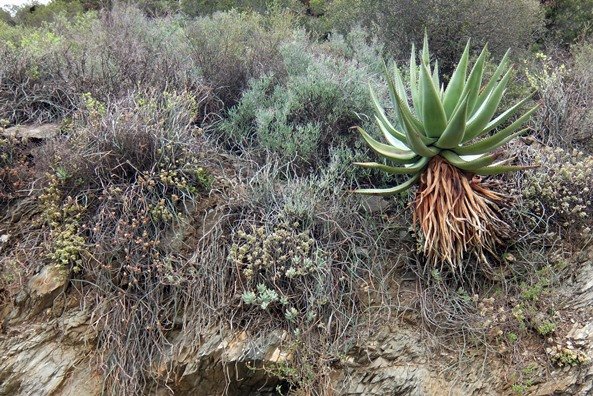Hanging on is a lifestyle

Author: Ivan Lätti
Photographer: Thabo Maphisa
Artificially created embankments can be stabilised by undisturbed plant life, if it is done deftly.
Engineering has many soil stabilisation techniques involving chemical and other soil modifications for achieving strength, durability and other desired effects, depending on project objectives. Combating erosion, enhancing traffic carrying capacity, stability and coping with diverse climatic events are some of them. High utilisation requirements are met using advanced technology. In many of these practices the germination of plants is avoided.
Vegetation coverings on steep gradients may suffice in secluded spots, depending on the slope and retained topsoil. Grasses and other ground-covering plants can do wonders where low people or animal movement is allowed to impact. The choices of species close to the natural vegetation of the area simplifies matters. Dense natural vegetation also helps in temperate and warm, high rainfall areas. Mudslides are the other side of the coin.
Doing nothing where removal of topsoil has taken place, may result in many years without a green blade in a particular patch. Rain and wind causing erosion, silting, dust and dongas compound problems over time.
In picture, an Aloe ferox and a variety of crassulas make a living on the edge, where a cutting into renosterveld has changed their ecology forever. Subsoil low in organic matter and humus is hard for roots to exploit in search of nutrition and securing plant body mass.
The occasional tumbling of a plant succumbing to gravity modifies the slope gradually, bringing the next in line neighbours to the brink. The way forward for this slope lies in going backwards into the future slowly.

